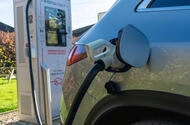What’s Changing with UK Electric Car Grants and Who Really Benefits?
If you’ve been eyeing an electric car but hesitated at the sticker price, there’s some good news on the horizon. The UK government is set to reintroduce grants for electric vehicles (EVs), but with a twist: this time, the scheme will reward buyers of UK-made cars more generously. So, what does this mean for everyday drivers, the auto industry, and the country’s push toward greener transport? Let’s break it down.
How Will the New EV Grants Work and Why the Tier System?
Unlike the previous Plug-in Car Grant, which was axed in 2022 and offered a flat £1,500 discount on new EVs, the upcoming scheme introduces a tiered approach. According to government sources, a total of £640 million in taxpayer funding will be allocated, with larger subsidies for EVs manufactured in the UK. This means if you’re considering a Nissan Leaf or the soon-to-arrive Juke EV—both built in Sunderland—you could see a bigger grant compared to imported models.
The tier system isn’t just about supporting British jobs. It’s also designed to ensure that the most expensive, luxury EVs don’t soak up public funds. Expect a price cap: only vehicles below a certain threshold will qualify, making the scheme more targeted and arguably fairer for typical families.
Why Focus on Retail Buyers Now?
Fleet sales have been propping up the UK’s EV market for a while, largely because companies benefit from tax breaks and other incentives. Retail buyers—regular folks like you and me—haven’t had the same level of support since the last grant ended. This gap has become more pressing as automakers struggle to meet the UK’s Zero Emission Vehicle (ZEV) mandate, which requires 28% of new car sales to be electric this year. Falling short means hefty fines of £12,000 per non-compliant vehicle.
So far, just under 25% of new cars sold in 2024 are fully electric, and industry voices worry that without more help for private buyers, progress will stall. The new grants aim to level the playing field and keep momentum going.
Will More Public Chargers Finally Ease Range Anxiety?
One of the biggest hurdles for would-be EV owners is the fear of running out of juice—what’s often called range anxiety. To tackle this, the government is committing an extra £60 million to expand the public charging network. This move is crucial, especially for those who can’t install a home charger or rely on street parking.
Transport Secretary Heidi Alexander put it bluntly: people need to move from range anxiety to range awareness. In other words, knowing you can reliably charge wherever you go is key to widespread EV adoption. Recent data from Zapmap shows that while the UK now boasts over 60,000 public charging connectors, distribution remains uneven, with rural areas still lagging behind. The new funding should help close these gaps.
How Does This Fit into the UK’s Bigger Green Motoring Picture?
The EV grant is just one piece of a much larger puzzle. The government recently announced Drive35, a £2.5 billion initiative aimed at supporting the transition to zero-emission vehicle manufacturing. This isn’t just about building cars—it’s about investing in R&D, upskilling workers, and ensuring the UK remains competitive as the global auto industry shifts toward electrification.
Industry leaders are on board. Mike Hawes, chief executive of the Society of Motor Manufacturers and Traders, called the new funding “further evidence of the sector’s importance to economic growth.” Business and Trade Secretary Jonathan Reynolds echoed this, emphasizing that supporting the auto sector brings jobs and opportunities nationwide.
What Should Potential EV Buyers Watch Out For?
If you’re considering an EV, keep an eye out for the official details, which are expected to be announced soon. The grant will likely apply only to cars under a certain price, so premium models may be excluded. Prioritize UK-made options if you want to maximize your savings. And with more public chargers on the way, owning an EV should get a little less stressful.
The big takeaway? Making the switch to electric isn’t about perfection—it’s about smarter adjustments. Start with one change this week, and you’ll likely spot the difference by month’s end.

